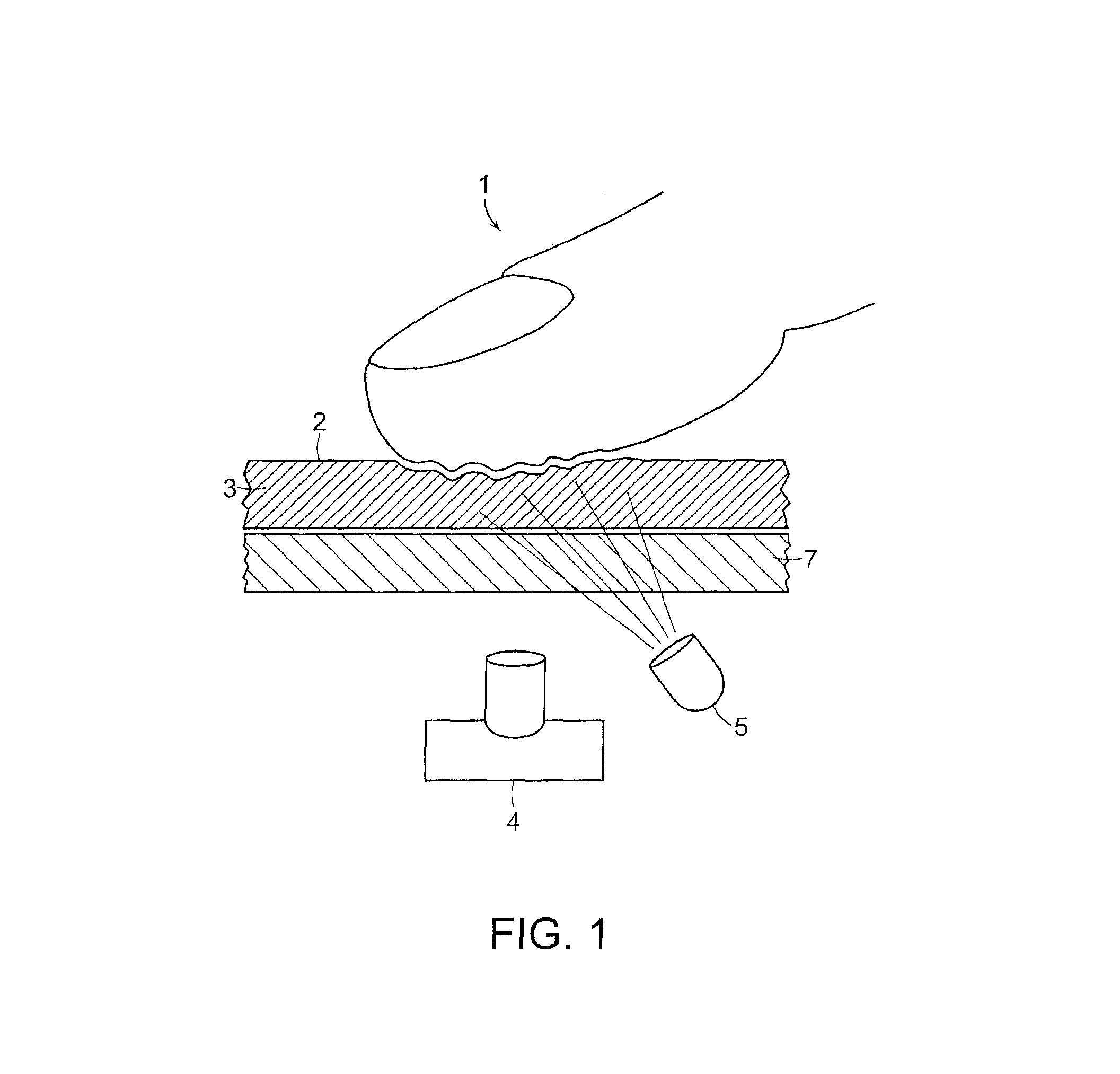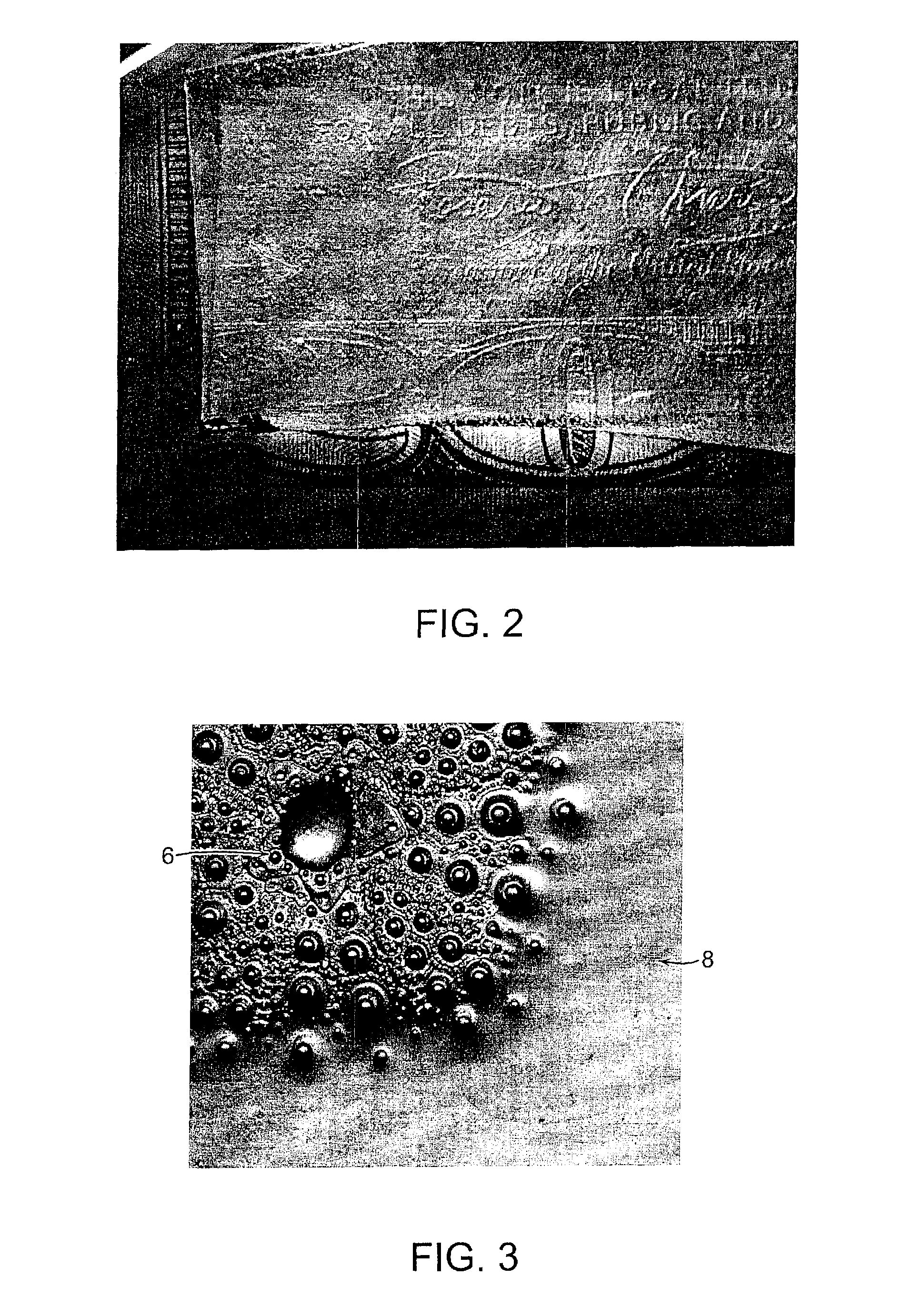Tactile sensor using elastomeric imaging
a technology of elastomeric imaging and tactile sensors, applied in the field of tactile sensors, can solve the problem of not being able to achieve all of these goals in a single sensor
- Summary
- Abstract
- Description
- Claims
- Application Information
AI Technical Summary
Benefits of technology
Problems solved by technology
Method used
Image
Examples
Embodiment Construction
[0020]The invention provides a new approach to making tactile sensors that attain high sensitivity, high spatial resolution, and low cost. In addition, it can be built in a compliant form, so that a robot finger incorporating this sensor can deform elastically in depth, following the profile of the object being manipulated, thereby allowing good control.
[0021]An exemplary embodiment of the invention, as shown in FIG. 1, is made from slab of clear elastomer, 3, supported by a rigid sheet 7 made of glass or other rigid clear material. The surface of the elastomer is coated with a reflective layer 2, referred to as the “skin,” which is made, for example, from an elastomeric paint comprising metallic powder embedded in an elastomeric material. The skin has an inner surface (facing the elastomer) and an outer surface (facing the outside world). Light from an illuminator 5 passes through the rigid support 7 and the clear elastomer 3 and strikes the reflective skin 2. When an object such a...
PUM
 Login to View More
Login to View More Abstract
Description
Claims
Application Information
 Login to View More
Login to View More - R&D
- Intellectual Property
- Life Sciences
- Materials
- Tech Scout
- Unparalleled Data Quality
- Higher Quality Content
- 60% Fewer Hallucinations
Browse by: Latest US Patents, China's latest patents, Technical Efficacy Thesaurus, Application Domain, Technology Topic, Popular Technical Reports.
© 2025 PatSnap. All rights reserved.Legal|Privacy policy|Modern Slavery Act Transparency Statement|Sitemap|About US| Contact US: help@patsnap.com



